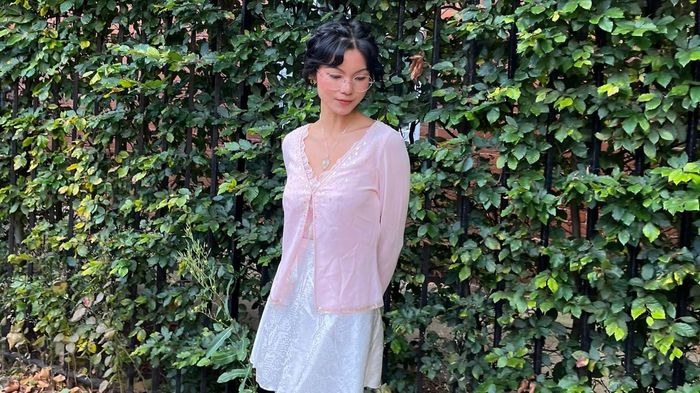Are we seeing a cute culture revolution?
Following the recent exhibition on cuteness at Somerset House, Abigail Liew explores the influence of this aesthetic on contemporary fashion

From the trend of adding bows to outfits to the craze for micro-tattoos featuring hearts and stars, cuteness pervades every aspect of contemporary culture. Initially coined in the 1930s as an American slang word, the term “cute” has seen a recent surge in global popularity. As Claire Catterall – curator of Cute: An Exhibition Exploring the Irresistible Rise of Cuteness at Somerset House – expresses, cuteness can be found everywhere, so much so that it is no longer “considered childish, it’s accepted now as an everyday aesthetic.”
“Cuteness pervades every aspect of contemporary culture”
The proliferation of cute culture is largely thanks to the Internet. Indeed, when Tim Berners-Lee, inventor of the World Wide Web, was asked what the Internet is most used for, he simply replied: “kittens”. The Internet’s obsession with cuteness reflects a universal affection for all things adorable, lovable and sweet-hearted. Cuteness embodies childlike innocence and positivity, creating a world of escapism and a welcome retreat from the pressures of everyday life.

East Asia has played a vital role in the popularisation of cuteness, with the region’s cultures experiencing an unprecedented explosion into the international scene in recent decades. South Korea, for instance, has blossomed into a major driver of global culture as Korean dramas, skincare routines and more become embedded in the latest trends. This phenomenon, known as hallyu in Korean, has visibly shaped the South Korean economy, with Vox reporting that its music industry has shot to a dazzling $5 billion thanks to the worldwide obsession with K-pop.
“East Asia has played a vital role in the popularisation of cuteness”
One aspect of the global takeover of East Asian aesthetics has been the rise of cute culture. Crucially, Japan’s influence on the curation of cuteness cannot be overstated. The term “kawaii” (“cute” in Japanese) is now a key aesthetic and lifestyle in Japanese culture. This movement arose in the 1970s with the emergence of comics aimed at young girls. These comics featured characters with big eyes, small noses and round faces – all attributes associated with cuteness – and paved the way for manga and anime that have become global sensations, such as Sailor Moon and Cardcaptor Sakura. Thriving beyond the comic book pages, these ideas have been revamped across the arts. Musicians like Kyary Pamyu Pamyu have incorporated the kawaii aesthetic into their costumes and videos. Most strikingly, the Harajuku style is recognised for its bold playfulness, with big bows and pastel frilly dresses ornamented with accessories.

While cuteness has undoubtedly become a cornerstone of East Asian aesthetics, the style has also spread to the international fashion scene. Its charming sweetness continues to leave its mark on the catwalk, with designers such as Chopova Lowena infusing their collections with ribbons, puffed sleeves and Peter Pan collars. Meanwhile, Ashley Williams incorporates bow tights and bonnets into her designs, while Sandy Liang favours pink gingham dresses and bows.
As Lauren Cochrane describes in Elle: “Clothes that could be worn by a particularly sweet china doll are twisted so the ‘sugar and spice of all things nice’ of sweet little girls is reworked for a generation steeped in the fourth wave of feminism”. Expanding on the feminist undercurrent of cute aesthetics, Claire Catterall explains that “women are taking on the soft side of cuteness but in a very assertive way”. Femininity is thus used as a source of power, with things that have traditionally been labelled “too girly”, like dresses and the colour pink, being reclaimed. 2023’s immensely popular Barbie movie was emblematic of this trend as it seeks to convey a feminist message while sparkling with hot pink girlish charm.
Grunge bands in the 1990s expressed their feminism in a different way. Popularised by Courtney Love from the band Hole, the Kinderwhore aesthetic was mostly developed by female grunge artists of this era. As apparent from its name, the style aimed to fuse two separate archetypes: the innocent child and corrupted woman. This was certainly reflected in the clothes choices: babydoll dresses, Mary Janes shoes, lacy socks and leather jackets to name a few. The transformation of these innocent pieces of clothing designed for children was meant to express feminist anger at the compliance and obedience expected of women. Hence, the aesthetic, both cute and corrupted, aimed to give women the space to take their innocence back. The style became an inspiration for numerous fashion designers including Batsheva Hay, Marc Jacobs and Hedi Silmane.
Overall, the powers of cuteness are endless. The aesthetic has manifested across the arts scene; it permeates fashion, the visual arts and music and has also been used as a political and economic tool. Being cute is a powerful expression of self and an escape from reality. Embracing its childlike whimsy and optimism encourages us to find beauty in the simplest things.
 Features / Cloudbusting: happy 10th birthday to the building you’ve never heard of30 March 2025
Features / Cloudbusting: happy 10th birthday to the building you’ve never heard of30 March 2025 News / Uni offers AI course for Lloyds employees30 March 2025
News / Uni offers AI course for Lloyds employees30 March 2025 News / Caius clock hand returned nearly 100 years after student prank31 March 2025
News / Caius clock hand returned nearly 100 years after student prank31 March 2025 News / Hundreds of jobs to be cut at Cambridge University Hospitals1 April 2025
News / Hundreds of jobs to be cut at Cambridge University Hospitals1 April 2025 News / Ski mask-wearing teens break into Caius accommodation27 March 2025
News / Ski mask-wearing teens break into Caius accommodation27 March 2025





